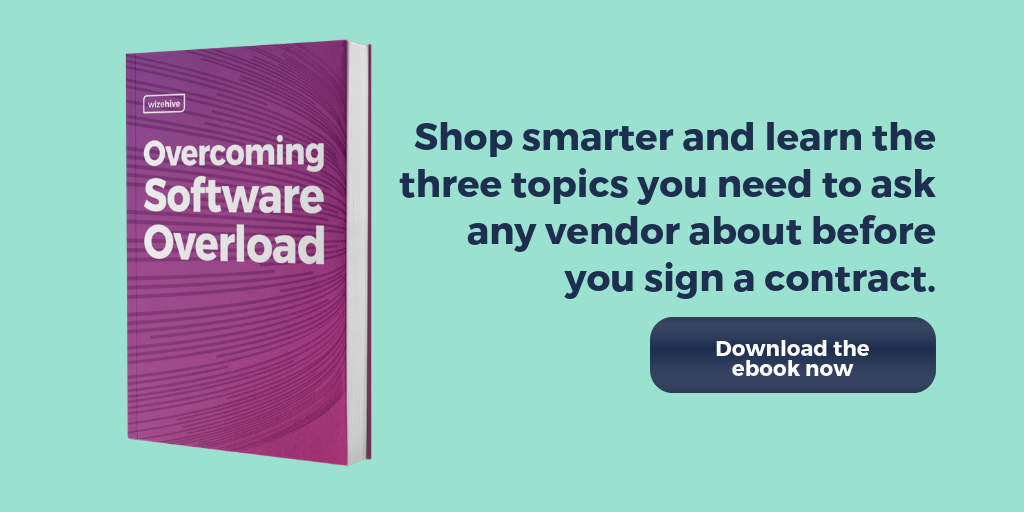An investment in awards management software can have many rewards of its own -- so long as the system has the right features. What should you look for?
Annual awards and recognition programs are more than just a pat on the back -- they are a strategic and valuable initiative that supports, celebrates, and rewards the hard work that goes on in your community every day. They are also complex projects to run and manage, particularly at scale.
When the number of awards or the number of applicants hit certain numbers, or the review process becomes more complex, it's time to consider awards management software. With the help of a platform, you can get back to the “big picture” and focus on the mission of your organization, reduce tedious day-to-day tasks, and even create a fairer scoring and selection process. Before you start, look for these top seven features of great awards management platforms.
1. Online applications
While today you can find most applications online, this doesn’t mean the process is perfect. Editable PDFs require you to read through each individual submission and pull out the important data. Simple online web forms require the organization, sorting, and manual manipulation of the spreadsheets they populate. Ancillary files like portfolios or reference letters fill up email inboxes.
With an awards management platform's online submission portal, the software does all the collection, sorting, and tracking for you, and your database has clean files of each applicant, all their information, responses, files, and more.
2. File uploads
Above we mentioned how these files can end up in inboxes, mailboxes, or lost all together. In addition to having a system that can allow uploads and automatically store them with the rest of the application data, look for a system that allows you to request any file you need. JPEGS, EPSs, Mov.4, MP3 ... you know what you need. It should be able to be uploaded.
An extra bonus is the ability to do blind requests for files. Most often used to request letters of recommendation, this feature allows an applicant to send an email to a colleague, mentor, or professor from within the application, requesting the individual write them a letter of recommendation. The individual receives the email along with a custom URL where they can upload the letter. Applicants can receive notice that the letter has been submitted, but cannot see the contents.
3. Save as you go
This feature is a no-brainer for anyone looking for an enhanced awards management platform. It removes the risk of applicants losing work -- and the frustration that comes with it -- by continuously auto-saving submissions in the background. Applicants can start an entry and take as long as they need to refine and complete over days or weeks before the deadline.
4. Reminder emails
We talked about the “7 Emails You Should Be Sending Applicants” before. Reminder emails enhance your awards management process and make it easier for your in-house team to manage everything. When applicants are better informed and engaged, your internal teams can focus on other tasks rather than spending all day routing applicant questions via email.
Emails you might want to consider to get started? The “upcoming deadline” email and the “change in status” email are essential. Deadline reminder emails can help increase the number of qualified applicants for your grant or scholarship. You don’t want to miss out on great applicants because they failed to upload a tax form or list of references by a certain date. Easily remind applicants of important deadlines without lifting a finger.
Is there a second review stage to your application? A change in status email lets applicants know the status of their application, helping internal staff field follow-up questions from applicants.
5. Automatic reviewer assignments
Automatic reviewer assignments, which automatically assign completed applications to reviewers, or reviewer teams, can be a huge time saver. Assign submissions to reviewers based on any data collected with the application -- perhaps all applicants are sorted amongst reviewers by their geographic area, their college major, or the department they work in at a company. Assigned reviewers receive an automatic email when a submission is ready to review.
You can also set up assignments to continue through multi-stage reviews. Send all applicants to initial review teams, then have only those that met a certain score forward on to a phase two review cohort.
6. Whitelabeling
Substance is important, but a little style never hurt anyone. And when the awards program in question is a major initiative of our organization, you want it to represent you visually. Make sure you can embed, or iframe, the application within your website to make for a smooth branding experience. If for some reason you don't want the application on your public site (perhaps it's invite only), be sure to add your logo and custom headers to still instill a seamless visual journey.
7. Custom reporting
Many of these elements make the application and review process easier, but then there's the issue of what to do with all of the data you're capturing.
During the program's open period, dashboards can be helpful for monitoring new applications, completions, and demographics on those applying. Create graphs and charts showing the time shared by your reviewers. Run reports on key features of your top applicants to look for trends. And use it all to share more about the impact of the program and continue to improve it year after year.
